Sherpa Adventure Gear Lithang 3-Layer Jacket
Price: £200
Weight: 543g (men’s); 432g (women’s)
Fabric: Polyester main body with polyester panels. Nylon backing to both. Waterproof PTFE membrane
Colours: Tibetan Coral/Lama Red; Black; Monsoon Grey/ Kharani/Karela Green; Rara Blue/Neelo (men’s), Black; Dark Jade/Light Jade; Kharani/Monsoon Grey/Aru; Tika/Gurans Pink (women’s)
Sizes: S to XXL (men’s) XS to XL (women’s)
Country of manufacture: Nepal
Sherpa Adventure Gear Tsepun Quarter-Zip Top
Price: £50
Weight: 250g
Fabric: 82 per cent nylon; 18 per cent polyester. Dry Zone ‘intelligent’ fabric
Colours: Kharani/black; Suntala/Thakale spice; Rara blue/ Neelo; Ani red/Thala
Sizes: S to XXL
Country of manufacture: Bangladesh
Sherpa Adventure Gear is fairly new to the UK market.
What marks it out from other brands is that most of the clothing is made in the Nepalese capital Kathmandu, and the company is Sherpa owned.
The Lithang waterproof is pitched at the hillwalker or climber who doesn’t want a bells and whistles jacket with tons of features, but does want to keep dry on the hill.
The first thing to say is it’s a good-looking jacket. Our red sample, supplied by Sherpa, had darker contrasting panels on the high-wear areas from elbows to shoulders, and around the main ‘handwarmer’ pockets.
The material, polyester rather than the more common nylon, is stiffer than many jackets in its class and it has a rugged feel to it. There’s a PTFE membrane which Sherpa rates at 20,000mm waterproofing and 20,000g breathability, a match for many of the ‘own-brand’ waterproofing systems found in similar garments, though not quite up to the top-performing membranes.
In practice, this didn’t seem to manifest itself, as the Lithang kept out the rain admirably.
The cut of the Lithang is fairly short, with the rear of the jacket a little longer. The main water-resistant zip is protected at the rear by a storm flap to make sure the rain stays out.
The fabric has a slight stretchiness, and the jacket is clearly aimed at active users, with mobility good thanks to good sleeve articulation.
There are two upper Napoleon pockets, big enough for items such as a GPS, compass, or mobile phone. Curiously, pictures of the women’s version, which we didn’t test, show only one upper pocket. On our men’s jacket, the left-hand upper pocket had a port to accommodate headphone cables.
The two lower handwarmer pockets are each big enough to take a laminated OS map, but are positioned in the hipbelt region, so if you’re wearing a rucksack, which most people will be on their outdoor trips, the belt will have to be unfastened to gain full access to the bottom pockets.
All the pockets have water-resistant zips and are fully lined – not with mesh.
And that’s it for pockets: none inside; no quirky little ones on the sleeve for who knows what esoteric item. And that’s fine by me. There’s enough space for the essentials you’re likely to need to hand: compass, map, gloves, hat. The rest can go in the rucksack.
The Lithang’s design is deliberately simple and this helps keep the weight, and cost, within reason. For £200 you’re getting a fully technical waterproof that compares very well with a lot of rivals on price.
The hood is plenty large enough to accommodate a helmet and the sleeves have hook and loop fasteners. There is a thinnish tricot chin guard.
The jacket has pit zips for venting, which have two-way sliders.
In use, the Lithang performed well, keeping out the rain and wind. Its fabric feels robust and it was showing no signs of wear after our tests.
The only signs of wear were on the loop holding captive the rear hood adjuster, which had started to fray. This is possibly because, in common with most modern hoods, the cords are thin and fiddly and on the mountain top and with gloves on, there’s a tendency to be ham-fisted in pulling the adjuster tight.
Once tightened properly the hood was good and turned fairly well with the head, though not as well as the best around.
The front adjusters, essential when walking into a headwind to avoid the hood working backwards, are incredibly difficult to use with gloves on.
Rather than using spring buttons to adjust, the cords pass through a pair of rubberised plastic holders and pulling the cord outwards engages it and holds it. Disengaging it to free the cord is the hard bit, and I simply couldn’t do that without taking off my gloves.
Climber Neil Gresham, one of Sherpa Adventure Gear’s athletes, described the Lithang as ‘an ice-climbing jacket’ and I can see this would appeal to winter climbers. The sleeve cuffs are quite a small diameter and I struggled to tuck a pair of winter gloves under them.
Of course, a climber would want the gloves over the cuffs to keep water out, whereas a walker will spend most of the time with arms lowered and the rain will run down into the gloves unless you can tuck them into the sleeves. Just a small point but one that occurred to me in use.
In summary, the Lithang is a good-looking no-frills jacket that does the job at a reasonable price. I liked its minimalist design and it performed the job it was asked.
And, Sherpa Adventure Gear is providing employment in its Kathmandu factories for citizens of one of the poorest countries on earth.
Lithang 3-Layer Jacket
We liked:
Good looks
Waterproofness
Price
Weight
We weren’t so keen on:
Hood adjustment
Cuffs
- The Tsepun, and its women’s equivalent the Dikila are described as base layers by Sherpa, but could quite easily be worn as mid layers in warmer weather.
The top is fairly thick for a base layer, which makes it ideal for winter use. It has good wicking properties and is also woven with silver ions to help minimise odour.
Its flat-locked seams are away from the top of the shoulder so there is no chafing when worn with a rucksack and the top has, as you would expect from its name, a quarter-length zip which also helps regulate temperature.
And if you’re heading for sunny climes, the Tsepun and Dikila block 99 per cent of UV rays.
In use, the Tsepun, with its Dry Zone fabric, which has three layers to help wick sweat away, worked well in weathers ranging from heavy rain to cold and dry, worn under a variety of outer layers, including the Sherpa Adventure Wear Lithang waterproof.
Inevitably, there was some wetness when working hard up our test hills, but the Tsepun dried out very quickly and by the time I had reached the valley again the moisture was gone.
A very welcome factor was the reduction in odour too. All too often you feel very anti-social after a hard day in the hills, with unwanted pongs lingering as you order that post-walk pint. The Tsepun was less whiffy than conventional polyester base layers I have used.
I was very pleased with the performance of the Tsepun, save for one aspect. During testing the zip on the small pocket of the top became detached, with the bonding failing.
The zip is bonded rather than sewn in, which makes a repair difficult without it looking very amateurish. It’s a shame that the Bangladesh-manufactured top let down in this way what would have been a very good product.
Tsepun base layer
We liked:
Performance
Quick drying
Lack of odour
We weren’t so keen on:
Zip fault that developed on pocket
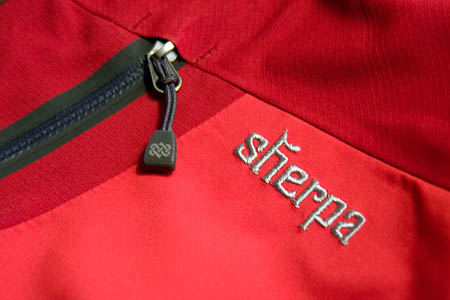
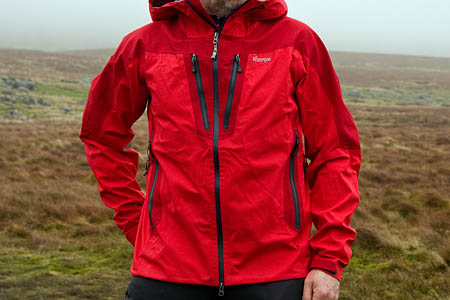
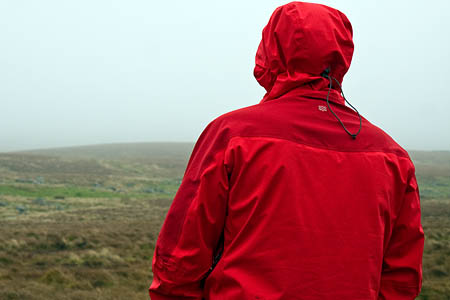
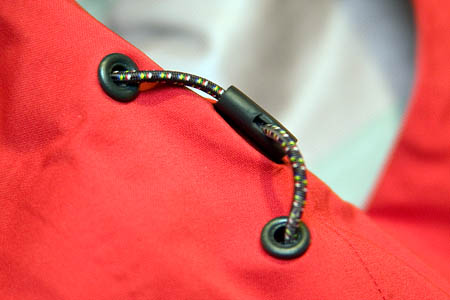

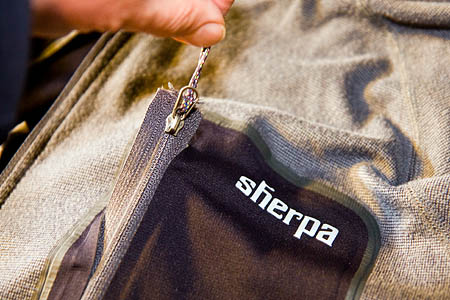
Joshua
21 March 2015Hey there! what is your height and weight and what size did you test?? I've worn an old version of this jacket for a long time and have really loved it! I'm about to receive a warranty replacement and want to know if the sizing has changed at all with Sherpa's shells.
I'm 5'10+ and weight a mean of about 165lbs or 73kg - I have been wearing a Sherpa size Small -- I wear even a medium / heavy weight fleece under it comfortably though snugly.
Thanks for the nice review! I'm rooting for Sherpa!